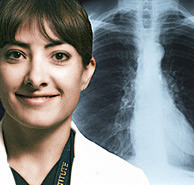Cabezas auxiliares de la cuenta del radiólogo al congreso
por
Brendon Nafziger, DOTmed News Associate Editor | September 27, 2011

A bill introduced to Congress last week that would let facilities and radiology groups bill Medicare for imaging services done by certified radiologist assistants or radiology practitioner assistants.
Under the bill, Medicare Access to Radiology Care Act of 2011, or H.R. 3032, facilities could get reimbursed by Medicare for services performed by radiologist assistants at 85 percent of the physician fee schedule rate.
The bill was introduced into the House of Representatives on Sept. 22 by Reps. David G. Reichert (R-Wash.), Jim Matheson (D-Utah), Peter Olson (R-Texas), Bill Pascrell, Jr. (D-N.J.) and Aaron Schock (R-Ill.). It's now making its way through the House Energy and Commerce Committee, and the House Ways and Means Committee.
Radiologist assistants are radiologic technologists with extra training (and often an advanced degree) who act as what the American College of Radiology and the American Society of Radiologic Technologists call radiology "extenders," meaning they can't interpret images but can do high-level work, such as administering contrast media or running fluoroscopic exams under a radiologist's supervision.
Radiology practitioner assistants, a related profession, were created in the 1990s in a program launched by Weber State University, but are not recognized by the ACR.
Currently, Medicare reimburses facilities using RAs through the doctor's practice expenses. However, the government generally requires radiologists to personally supervise all covered procedures performed by the RA: that is, the doctor has to be physically present in the same room as the RA, thus largely erasing the efficiencies gained by having an RA, according to the American Society of Radiologic Technologists, which endorses the legislation.
The new bill would change the supervision level required for reimbursement for some procedures from personal to direct, meaning the doctor would simply have to be nearby and immediately available to come by the RA's side, if needed, according to the ASRT.
The backers of the bill say its changes could help save health care dollars by freeing up radiologists to spend more of their time on image interpretation and less on work that can be delegated to the assistants.
"At a time when many Americans are looking for work and high numbers of Medicare beneficiaries are increasing the demand for services, it seems that this bill is a win-win for radiologist assistants and the patients that will benefit from their care," Reichert, one of the bill's sponsors, said in a statement. Reichert represents a district which includes Bellevue, a Washington town east of Seattle that's home to Bellevue College, one of 13 U.S. schools offering accredited programs for RAs.
To be eligible for the reimbursements, the radiologist assistants would have to be certified by the American Registry of Radiologic Technologists, and the radiology practitioner assistants by the Certification Board for Radiology Practitioner Assistants. Their work would also have to be performed under the supervision of a radiologist.
Right now, 29 states license radiologist assistants, most recently Utah, which signed into law a licensing bill in March.
The current, federal legislation is supported by the American Registry of Radiologic Technologists, the American College of Radiology, the American Society of Radiologic Technologists and the Society of Radiology Physician Extenders.
"We believe this bill will preserve RA educational programs and jobs while saving needed health care dollars," ASRT President Dawn McNeil said in a statement. "In addition, it will ensure that patients continue to have timely access to quality medical imaging services."
|
|
|
You Must Be Logged In To Post A Comment
|
